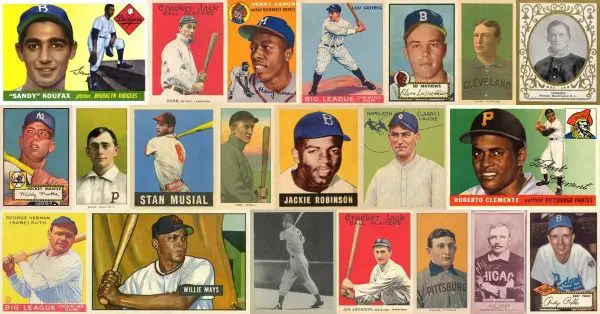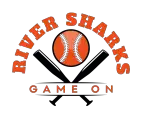Most American youth that was introduced to sports at a young age will attest to having indulged in the popular hobby of baseball card collection. America’s favorite pastime has been around for centuries, but baseball cards featuring famous players have a separate fan base.
Young children collect baseball cards and learn the value of the card through various factors like player featured on the card, the year the card was produced, and its number in the set.
Baseball card collectors have their own separate community with plenty of knowledgeable fans who were influenced by the hobby, and some still collect them to this day.

The History of Baseball Cards
It was in the 1880s when the first-ever baseball cards were sold, and they used to come in cigarette packaging as they were part of an advertising campaign that included athletes, actors, and war heroes.
The ploy didn’t work on adults who were impervious to these cards, but the children found them irresistible and many would find discarded cards and added them to their collection.
By the 1930s the Goudey Gum Company started to introduce baseball cards in their bubblegum packs and other companies started to use this tactic to target the younger market.
Guide to Baseball Card Prices
They set the price of baseball cards after calculating various criteria that go beyond the player featured on the card. You must account for factors like condition, print variation, scarcity, and errors, which impact the value and price of the card.
Topps is the leading baseball card producer, and most baseball card collections feature their cards, but there are other prominent brands such as Upper Deck, Fleer, and Donruss. If you’re trying to figure out the value of your baseball cards, you can use this guide and get a good idea.
Player on the Card
Common player cards will not be worth more than Hall of Fame player cards, but there are some exceptions.
The most valuable cards are worth more for emotional reasons (if the player was a childhood idol). However, baseball cards featuring star players will be priced at a premium compared to other players.
Also, most player cards are at the peak of their worth when they were rookie cards, which would be the first year as a professional for that player.
Condition of the Card
The value of the card is also affected by the condition it is kept in, irrespective of how rare it is. You can determine the condition of the card by looking at the edges, corners, centering, and the surface for wear and tear.
Corners
The corners of the card must have well-defined, sharp edges because if the corners are fraying, rounded, or torn, they are considered to be in ‘poor condition’.
Edges
Look at the edge straight on by turning the card sideways to assess the edges of the card. Damaged edges will have dents or chips in the foil, although some vintage cards were poorly cut by the manufacturer, which is why they have poor edges.
Centering
This refers to how the image was printed on the card and where it is in the center of the card. That means the borders must be in line on all four sides, and some vintage cards have centering problems because they were produced at a time when printing techniques weren’t as sophisticated as today. The less centered a card is, the less its worth.
Surfaces
The surface of baseball cards today is made with metallic or glossy cardstock, which makes it easier to recognize signs of damage. Stains, creases, scratches, fading, marks, and indents will devalue the card.
Graded Versus Ungraded Cards
A graded baseball card is one that has been judged by a professional graded on its authenticity and condition. Collectors are generally inclined to pay more for graded cards compared to ungraded cards, since they know that the graded card has been examined by an expert and deemed to be authentic.
Baseball cards are graded on a scale of 1 – 10, with 1 being rated as ‘poor’ and 10 rated as ‘perfect.’ Setting a fair price for ungraded baseball cards is harder for buyers and sellers because they haven’t been authenticated by an expert.
Printing Year
The older a baseball card is, the more valuable it is going to be, so a common baseball card from 1912 is going to be worth way more than a baseball card that was printed in 1970. There are some exceptions to this rule depending on the player featured on the card, how rare the card is, and other factors like the condition of the card.
The reason older baseball cards are more pricey is because there is a limited number of these cards around today, as most of them were either damaged or lost over time. It was in the 1980s when baseball cards were printed in mass numbers, which is why their value is significantly less.
Errors
There are often errors made during the production process of baseball cards, and these errors may result in price increases in the value of the card depending on the rarity. Baseball cards have two types of errors, which are corrected errors and uncorrected errors.
Corrected errors are the ones the manufacturer noticed and corrected, but not after most of the other cards have been printed with errors. That results in the error cards that were printed before corrections were made to be rarer, as there were only a limited number of them.
Uncorrected errors are errors that the manufacturer didn’t notice and never bothered to correct. The value of corrected error baseball cards is higher mainly because there were two versions of the card, and collectors are willing to pay more for the uncorrected versions.

